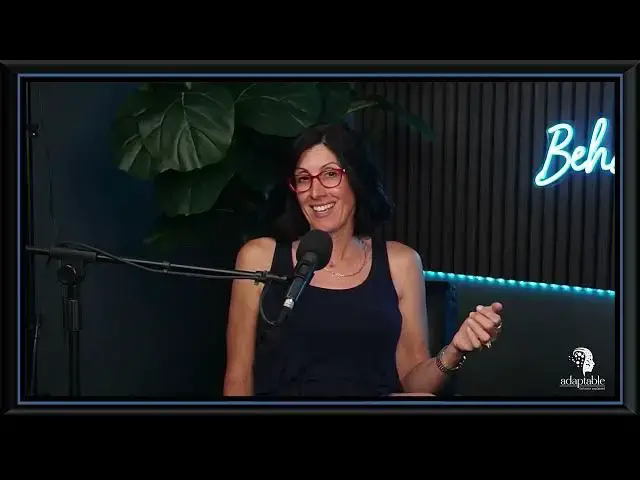0:00
when we take the family history and we
0:01
look at something like a genog or a
0:04
trauma egg in some models and we start
0:06
to peel back the layers of what
0:08
someone's story shows us often times
0:11
those behaviors or those anxieties are
0:13
not from their life itself and i'll even
0:16
do implicit work with people and i'll
0:18
say you know i know you're feeling
0:20
anxious i know your mom had anxiety i
0:22
know your dad you know was struggling
0:23
with the things that you described but i
0:25
want you to close your eyes and i want
0:27
you to tune in and if you could think
0:28
about mom and think about how much
0:30
you're carrying that's yours and how
0:32
much you're carrying that's hers if you
0:34
could split this pie chart up what
0:36
percentage would you give back to mom
0:38
that you know is hers and isn't yours
0:40
and without fail i have never had a
0:42
client that didn't just know they would
0:44
come with an answer like "oh it's like
0:45
80% hers it's not even mine." and so
0:48
part of the work that we're able to do
0:49
which is so fun and fascinating is
0:52
almost give back the percentage of
0:55
whatever that expression of a trait is
0:57
to the parent we lean into what the
1:00
warted experiences emotions and
1:02
behaviors that happened in the
1:03
generations before us and we acknowledge
1:06
we validate we feel the feelings that
1:08
were often times not able to be
1:10
expressed and in so doing we're able to
1:13
relieve generational shame we're able to
1:16
reduce the i guess a universal energy i
1:19
think is what it feels like is we're
1:21
able to release or free generations past
1:24
of course ourselves and then what's even
1:26
more fascinating is we're able to change
1:28
the way our rna shows up and our
1:30
offspring don't necessarily have to
1:32
carry it if we do our trauma work before
1:34
we reproduce so sometimes the anxiety
1:37
and the depression or the hypervigilance
1:39
we feel isn't just ours it's not just
1:42
our story it's about our family's story
1:45
so let me give you another example let's
1:47
say your grandmother lived through war
1:49
she developed hypervigilance she's
1:51
always scanning for danger she needed to
1:53
do so as a survival mechanism because
1:55
the history dictates the other shoe is
1:58
going to drop because she's seen that
1:59
happen and that pattern may have been
2:01
passed down not just through behavior
2:03
but biologically so you might feel
2:06
anxious in safe situations or have a
2:08
propensity to scan environments because
2:10
your nervous system is still wired for
2:12
that danger um so what looks like
2:15
dysfunction in you might just be an
2:18
adaptation your body is trying to
2:20
protect you based on whatever
2:22
information was inherited and what was
2:24
useful generationally uh in past isn't
2:28
maybe ne necessary now and so we're
2:30
adapted to be ready in that fight that
2:33
freeze that fleece stance when it's no
2:35
longer necessary and so when you're
2:37
thinking about how you show up really
2:39
get curious about what did your parents
2:41
carry what did they go through because
2:43
that data that information gives us a
2:46
lot to work with so there's a lot of
2:48
good news about learning about this
2:50
these epigenetic changes aren't
2:52
permanent just like any dance that we
2:54
have now any state that we are
2:56
experiencing any traits that we've
2:58
inherited and that we show up those are
3:00
influenced by our experience and that
3:02
means that they can be changed so we've
3:05
learned them generationally in our
3:06
family history sometimes in our current
3:09
environmental lives and things that
3:11
we've been through and sometimes past
3:14
but all of those adaptations are things
3:15
that our brains had to learn in order to


